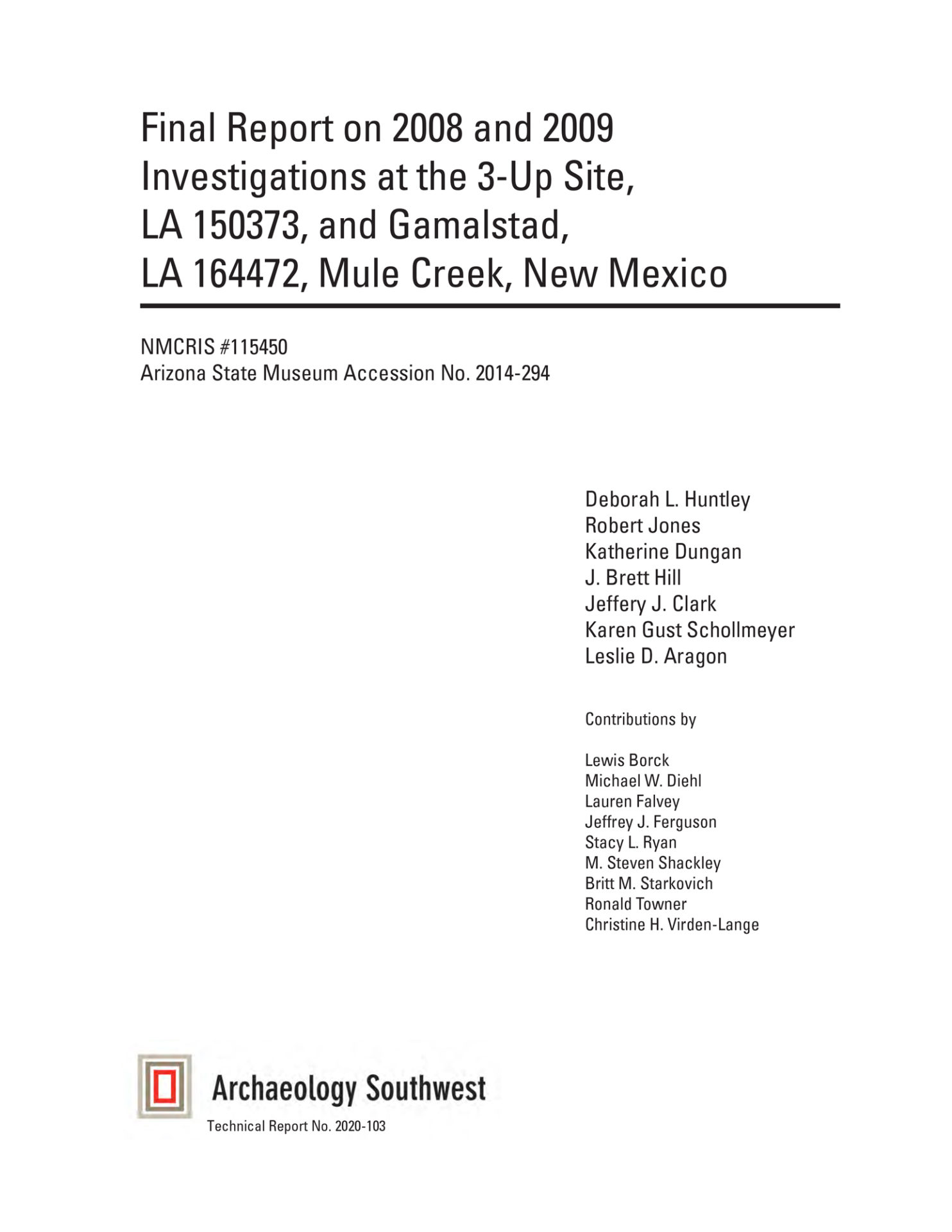Description
In 2008 and 2009, researchers from Archaeology Southwest (formerly the Center for Desert Archaeology) and the University of Arizona (UA) in Tucson partnered with Hendrix College (Arkansas) to conduct archaeological investigations in Mule Creek, New Mexico. Several private landowners granted access to land along Mule Creek, which allowed the Mule Creek Archaeological Testing Project (MCAT) to conduct test excavations at the previously recorded 3-Up site, LA 150373 [or NM S:13:4 (ASM)]. Limited testing was also conducted in 2008 and 2009 at the newly recorded Gamalstad site, LA 164472 [or NM S:13:10 (ASM)] (Chapter 7, this volume). In addition, several previously recorded sites were revisited, and several new sites were recorded, most of which are small room blocks or artifact scatters on the terraces above Mule Creek (Chapter 8, this volume). During both field seasons, students from Hendrix College were trained in field and analysis methods as part of an archaeological field school.
The research reported here is part of a larger interdisciplinary investigation into late prehistoric community formation and dissolution in the Upper Gila area of southeastern Arizona and southwestern New Mexico. The thirteenth through fifteenth centuries were times of demographic upheaval and population reorganization throughout the American Southwest. Previous research in the San Pedro and Safford areas has shown that migrants from the Kayenta/Tusayan region of northern Arizona moved into parts of southern and central Arizona beginning in the mid-thirteenth century (Clark 2001; Di Peso 1958; Lindsay 1987; Lyons 2003). These migrant communities maintained aspects of their northern traditions, including masonry architecture and Maverick Mountain series pottery, while interacting with local groups.
The proposal here is that migrant groups formed a diasporic community that shared a social identity despite living in enclaves throughout the southwest. The Upper Gila area seems to have been one of the few locations in the southern Southwest that experienced population growth during the late AD 1300s (Lekson 2002; Nelson and LeBlanc 1986; Wilcox et al. 2003), when many other aggregated communities were dissolving (Hill et al. 2004). The influx of diverse cultural groups into the Upper Gila area during the fourteenth century resulted in a diverse archaeological record that has been historically understudied.
